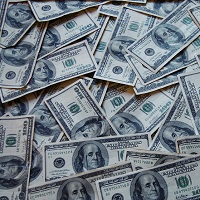The final IES report on the School Improvement Grant program is devastating to Arne Duncan’s and the Obama administration’s education legacy...
Despite its gargantuan price tag, SIG generated no academic gains for the students it was meant to help. Failing schools that received multi-year grants from the program to “turn around” ended up with results no better than similar schools that received zero dollars from the program. To be clear: Billions spent had no effect.
No matter how the researchers crunched the numbers, the abysmal results were the same. SIG didn’t improve math scores. Or reading scores. Or high school graduation rates. Or college enrollment. SIG didn’t improve elementary or secondary schools. It didn’t help schools in Race-to-the-Top states or non-Race-to-the-Top states. -Andy Smarick

The Department of Education has just released its first state-by-state comparison of education statistics, and the report has a few surprises. Texas performed extremely well, tying five other states for the third-best graduation rate in the country, at 86 percent. And Texas isn’t the only high-performing red state: Indiana, Nebraska, North Dakota and Tennessee all place within the top ten as well.
Meanwhile, New York, Rhode Island, and California, all of which take a traditional, high-spending, blue model approach to education, are closer to the middle of the pack , with graduation rates in the mid-70s. This is convincing evidence against the popular notion that we can fix the public education system if only we are willing to spend more money.
Not only does Texas do a better job of graduating its students than its blue state competition; it does so at a fraction of the cost per student. -Walter Russell Mead 
New York has the highest per-pupil public school spending in the country, and what’s it accomplishing? A high-school graduate population that’s overwhelmingly not ready for college... only 37 of every 100 students who entered high school in 2009, and stayed long enough to graduate, learned enough by last June to do college-level academic work — or to enter the workforce in any meaningful way. 
Liberal, Government, Incompetence, Oops, Education
Colorado’s education department will spend up to $5.2 million over six years on a consultant charged with determining why the state’s 2012 landmark reading law failed to produce significant gains for struggling readers...
A state law passed last spring mandated the external evaluation and other steps intended to improve the 2012 law, known as the READ Act. The recent legislation came in the wake of ongoing criticism from lawmakers, parents and literacy advocates about the law’s effectiveness.
Despite hundreds of millions of dollars spent on reading intervention since the READ Act’s inception, just over 41% of Colorado third graders met or exceeded grade-level standards on the state’s 2019 literacy test. The percentage wasn’t much different — 38.2% — in 2015.
Liberal, Government, Incompetence, Oops, Education
The public schools in Washington, D.C., spent $29,349 per pupil in the 2010-2011 school year, according to the latest data from National Center for Education Statistics, but in 2013 fully 83 percent of the eighth graders in these schools were not "proficient" in reading and 81 percent were not "proficient" in math.
Liberal, Incompetence, Financial, Science, Narrative, Oops, Education
An international survey found that the United States spends more than any other developed country in the world on education, but American students trail foreign students consistently on international tests. According to the Organization for Economic Cooperation and Development, the United States spent an average of $15,171 in 2010 on each student when college or vocational training was factored in—the highest in the world... But all of the money spent does not guarantee success; U.S. fourth-graders ranked 11th in the world in math in 2011; U.S. eighth-graders ranked ninth. Among 15 year-olds in 2009, the math literacy rate was 31st in the world—lower than the international average—while they were 23rd in science.
Government, Narrative, Education
In 1970, public schools employed 2.06 million teachers, or one for every 22.3 students, according to the U.S. Department of Education's Digest of Education Statistics. In 2012, we have 3.27 million teachers, one for every 15.2 students.
For decades we have tried to boost academic outcomes by hiring more teachers, and we have essentially nothing to show for it. In 1970, public schools employed 2.06 million teachers, or one for every 22.3 students, according to the U.S. Department of Education's Digest of Education Statistics.
In 2012, we have 3.27 million teachers, one for every 15.2 students. Yet math and reading scores for 17-year-olds have remained virtually unchanged since 1970, according to the U.S. Department of Education's National Assessment of Educational Progress. -Jay P. Greene 
Editorial, Liberal, Narrative, Oops, Education
The tens of billions of dollars spent on Abbott districts have yielded almost no significant educational gains... The study showed that the gap in combined scores between whites and Hispanics remained about the same in Jersey—where about half of all minority students live in Abbott districts—as it was nationally.
Liberal, Narrative, Oops, Education
We find that traditionally collected input measures — class size, per pupil expenditure, the fraction of teachers with no certification, and the fraction of teachers with an advanced degree — are not correlated with school effectiveness.
Editorial, Liberal, Narrative, Education
This is seen most dramatically when workers switch from non-teaching jobs to teaching jobs. Such a move typically results in a wage increase of approximately nine percent. "Teachers who change to non-teaching jobs, on the other hand, see their wages decrease by roughly 3 percent. This is the opposite of what one would expect if teachers were underpaid," Richwine and Biggs said.
Union, Incompetence, Education
In 1998, according to the U.S. Department of Education, Wisconsin public school eighth graders scored an average of 266 out of 500 on the NAEP reading test. In 2009, Wisconsin public school eighth graders once again scored an average of 266 out of 500 on the NAEP reading test. Meanwhile, Wisconsin public schools increased their per pupil expenditures from $4,956 per pupil in 1998 to 10,791 per pupil in 2008.
Education
As we can see, with the exception of Switzerland, the United States spends more than any other country on education, an average of $91,700 per student between the ages of six and fifteen.
“Per-pupil spending today is roughly double (in inflation-adjusted terms) what it was in 1983.” Test scores, however, have stagnated.










